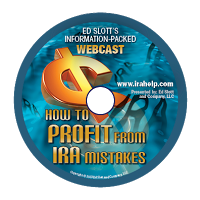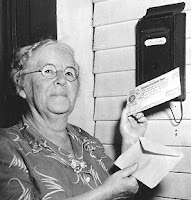A recent report released by the Center for Retirement Research at Boston College shows that Social Security is one of, if not the cheapest annuities available (
click here to see the report). "Well that doesn't make much sense" you might be saying to yourself. After all, you don’t "buy" your Social Security annuity payments right? You're simply entitled to receive them after meeting certain requirements.
We first touched on this subject in an article last Wednesday.
CLICK HERE to read Part 1 of the article.
Part 1 of the article concluded with the following text:
According to the study, if you compare the cost of buying this annuity to other alternatives, you’re usually going to find it’s a less expensive option. Plus, unlike many other lifetime income options, Social Security payments are indexed for inflation, meaning that the additional $800 you receive will increase in future years along with the costs of goods and services, helping you to retain your purchasing power.
That’s nice, but what does this mean for IRA owners?
Well, here's your answer.
Well, it means that you may want to seriously consider using your IRA and/or other retirement funds to meet your living expenses and delay taking Social Security. The longer you wait to take those payments, the higher they will be (up to age 70). Of course, using IRA funds in lieu of Social Security payments has a number of disadvantages as well, and you have to look at both sides of the coin here before making any decisions.
One downside of drawing down your IRA sooner than you’d otherwise have to is the acceleration of income tax owed on the distributions. As tax-deferred accounts, IRAs aren’t taxed until the money is withdrawn, which helps to minimize income tax and enhance growth. IRA owners, including SEP and SIMPLE IRA owners, don’t have required minimum distributions until the year they turn age 70 ½, and that first distribution is not required to come out until the following April 1st. Therefore, any IRA owner using IRA distributions to supplement their living expenses in order to get a higher Social Security payout is taking IRA funds out before they would otherwise have to.
Along that same line of thought, IRA income is more “expensive” than Social Security retirement benefits. What exactly do I mean by that? Simple: a $10,000 IRA distribution will generally raise your tax bill more than $10,000 over what Social Security retirement benefits would. “Why is that” you might ask, “after all, aren’t they both taxed as ordinary income?” Yes, they are, but there is an exclusion formula for Social Security benefits. The formula is somewhat complicated, so to keep it simple, let’s leave it at this; depending on your income, you might pay ordinary income tax on anywhere from none of your Social Security income all the way up to 85% of it.
Note that you are not paying an 85% tax on those payments (even the government has a heart), but merely paying tax on 85% of what you received at whatever your personal income tax rate is. In other words, at least 15% (and potentially all) of your Social Security payments will be tax-free. In contrast, IRA distributions are generally fully taxable.
So are Social Security payments always more tax-friendly than IRA distributions? No, that would simply be too easy. If you happen to have an IRA with a significant amount of after-tax money in it, it’s possible for an IRA distribution to be more income-tax friendly than Social Security payments.
For example, let’s say you are in the top federal income tax bracket and could receive a $20,000 Social Security payment. In addition, you also have a $20,000 IRA with $10,000 of after-tax funds. If you take the Social Security payment, you will owe what I like to call “max on max,” or in other words, the maximum income tax rate on the maximum amount of Social Security that can be included in your income. The maximum amount that can be included is 85% and the maximum federal income tax rate is 35%, so your $20,000 Social Security benefits would be subject to $5,950 ($20,000 x 85% x 35% = $5,950) of federal income tax.
In contrast, if you emptied your IRA, the tax impact would actually be about $2,500 less. Recall that out of our $20,000 of total IRA money, $10,000 was after-tax money. That’s already been taxed, so only the remaining $10,000 would be subject to income tax when it was withdrawn, leaving you with a tax burden of $3,500 ($10,000 x 35% = $3,500).
Looking at the taxes in a bubble though, isn’t really fair. In fact, it’s not fair at all. To make an eco-friendly analogy, using Social Security payments to meet your living expenses is kind of like burning wood, in that the Social Security payments are a renewable resource. You can “make” more of them by simply not kicking the bucket. Using your IRA, on the other hand, is kind of like burning oil. It is not renewable. Once it’s gone, it’s gone, and when you’re retired, there’s no way to make any more of it.
Following that line of reasoning, by drawing down your IRA earlier than you have to, it stands to reason that your IRA has less value than it otherwise could have. In certain cases, that might mean a diminished emergency fund, while in other cases, where there are ample other funds available, it could impact legacy goals.
For instance, withdrawing funds from an IRA means there will be fewer funds available for your beneficiaries to stretch once you’re gone. Remember, Social Security payments are an annuity, not an asset, so they generally die with you (although exceptions, like a spouse stepping up to your higher payments, may apply). IRAs, on the other hand, are an asset and can be passed to the beneficiary of your choosing. Withdrawing IRA funds sooner than you have to also means that there is less available for you to convert to a Roth IRA, if that is a part of your overall plan.
So what strategy is right for you? Should you spend down your IRA to “buy” an increased Social Security annuity or should you take your Social Security payments sooner and preserve more of your IRA assets?
Well, that depends on a lot of factors, most notably, how long you live. In general, the longer you live, the better off you’ll be drawing down your IRA to max out Social Security payments. Of course, since none of us have a magic crystal ball that can see into the future, it can make these types of decisions particularly difficult to make. If you’re on the fence, the best advice is probably to make sure you’re including all the relevant factors, such as legacy goals and your tax bracket, and to work with a financial professional who can help you balance some of these competing interests.
-By Jeff Levine and Jared Trexler You can listen to Ed Slott, America's IRA Expert, detail many of the real-world IRA misfortunes he has seen and demonstrate how you can use these mistakes as teaching tools to build your business and increase your value.
You can listen to Ed Slott, America's IRA Expert, detail many of the real-world IRA misfortunes he has seen and demonstrate how you can use these mistakes as teaching tools to build your business and increase your value.




















